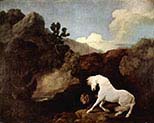George Stubbs
1724-1806 England/Rococo
Click an Image to Enlarge
Cheetah and Dear
with Two Indians
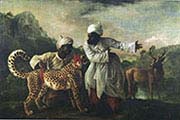
Horse attacked
by Lion

Mares and Foals
in River Landscape
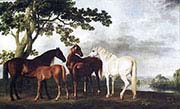
Soldiers of the
10th Light Lagoons

The
Pointer

Leopad-
Enamel

Whistlejacket

Reapers

Huntsmen Setting
out from Southill

Miss Isabella
Saltonstall as Una

Milbanke and
Melbourne Families

Princ of Wales's
Phaeton

William
Anderson
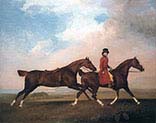
Haymakers

A Lion
Attacking

Baboon
and Albino

Death
of a Doe

Portrait of
john nelthorpe

Lion Devouring
a Horse

Lady and Lord
in a Phaeton
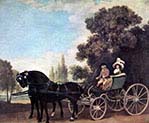
White
Dog

Self
-portrait

Horse
Embarrassed
